|
TennisOne Lessons Maximum Performance Training Dr. Ray Brown In this article we will address several topics that are preliminary to our next series of articles on match performance. Each topic has a bearing on designing the right training regime for your players. Topic one is gross versus fine motor control development. Topic two is the phenomena of mental collapse. Topic three is above real-time training. Also, in topic four, we will comment on the problems of implementing our programs in tennis clubs and in public and private tennis camps and clinics. Topic one: Gross Versus Fine Motor Control It is a common belief that one can develop tennis skills fastest through the use of tennis drills. For example, one expects to develop volley skills through volley drills, ground stroke skills through ground strokes drills, etc. This is a plausible approach in the absence of any scientific data or knowledge about what is required to develop a motor skill. However, when science sheds light on this subject, an entirely different understanding emerges.
As we have described in other articles, one cannot develop power by developing control just as surely as one cannot develop anaerobic endurance by running long distances. The human body and its motor control systems have specific structures, boundaries, and parameters within which it must operate and, therefore, an instructor must teach. Operating outside of these parameters and limitations is very inefficient.
What is Gross Versus Fine Motor Control Playing a piano requires fine motor control (skilled, agile, and controlled movement of small muscles). So does surgery. What is less apparent is that these skills also require gross motor controls (stable and controlled movement of large muscle). For example, while the fingers must glide over the keys of a piano with ease and agility, the shoulders must hold the hands in place with sufficient precision to allow this to happen. Hence, a pianist can accelerate development by assuring that the shoulders are strong and stable. Likewise for a surgeon and a tennis player as well. The exact balance between gross motor training and fine motor training varies with the skill desired. For example, an offensive lineman does not need the fine motor control of his hands that are required of a surgeon. So what about tennis?
Before the era of power tennis, the role of gross motor skills and development was seldom noticed. The elegance and finesse in the hands of such players as Frew McMillan in doubles or John McEnroe kept our attention on the importance of fine motor control. To develop fine motor control you must conduct specific tennis drills. We all know what these drills are; every club and camp uses them. But what is not evident without scientific analysis is that these same drills cannot rapidly develop gross motor control. This is not a new insight, it is just made more evident by today's power game which requires significant gross motor control to control the power game. From these comments we see that today's training programs, to be efficient, must understand the role of gross motor control and how it is developed. Specifically, it is highly inefficient to use conventional tennis drills designed to develop fine motor skills, to develop gross motor skills as well. The fact is that gross motor skills require the development of large muscle groups and their control systems. Using a volley drill to develop shoulder power will get the job done, eventually, but focused training of the large muscle groups will dramatically accelerate the development of gross motor control and thus also fine motor control. A way to think about this is to consider how you would feel going into surgery knowing that your doctor had the hands of an artist but also had very weak and unstable shoulders. The absence of gross motor control in the shoulders completely negates the value of fine motor control in the hands. All of this has always applied to tennis, but it applies more so today than ever before. The drills in the preceding three articles have discussed the development of gross motor control to support power tennis. In our next series of articles we will explain how these skills apply to match performance by analyzing T1 high speed video. Topic Two: Mental Collapse and Conditioning We have all seen matches in which one player is well ahead and in position to win only to lose after what appeared to be a mental collapse. The fact is that this is far rarer than it appears since most of the cases of so-called "mental collapse" are actually physical collapses. To understand this we must dig into a little biology. It is a fact that if you perceive your opponent to be physically stronger than yourself, or more skilled, the primitive part of your brain sends to your body an unconscious message to "flee or submit." These are the two most commonly used survival mechanisms at the primitive level. This is interpreted, in modern human culture of a tennis match, as mental collapse. Obviously it is not a mental collapse at all but a natural survival mechanism coming into play. We may not consciously perceive anything related to fear or directly consider fleeing or submitting, but the unconscious mind can and will.
The most subtle situation in which this occurs is in a match where two players are closely matched in skill, and then one player just seems to go away. What may not be detected is that the player that fades is actually not in as good a physical condition as the other, and his/her body just begins to fail. In the process, his/her behavior changes from offensive to defensive in response to the "flee or submit" signal from the brain. There may be no perception of physical fatigue on the part of the fading player and afterward, if questioned, the player may deny any fatigue at all. This denial is mostly a result of perceived social pressure. While there can be other causes of "losing from a winning position," the physical causes should be addressed first. This means that the right physical conditioning regime must be put in place and carried out to see if occurrences of mental collapse are remedied. A second cause stems from childhood perceptions of our role or place in the pecking order of society. A player must believe it is his right to win in order to win. Not believing that you have the right to win can have cultural origins and require more skilled treatment than we can go into here. However, this should never be the first place to look to cure this problem. A third cause is the unwillingness to accept the responsibility of wining. This is of sufficient importance to understand that we treat it as a separate topic. The psychological basis of Winning Winning in any enterprise is a two-edged sword. When looking "upward" at someone who can win, many only see winning as glamorous. This is one of the attractions to winning for some. To others, it is self realization, and a symbol of power to others. This is one edge of the sword. The other edge is usually only understood after winning at something. The event of winning causes the winner to stand out from the pack. To many, this is an uncomfortable position. So uncomfortable that they never win again because they want to blend into the crowd. To those who can accept winning, it is a position that they realize comes with a price. This price can have several forms. One is that they learn that they have become a "target." Someone is always "gunning" for them. One form in which this appears is that everyone is constantly playing their best to beat the "winner" since they feel that have nothing to lose. This puts constant demands on the winner. However, if they keep these demands in perspective it is not a problem. Winners are often forced into being an authority figure, someone responsible for the psychological needs of others, or even someone responsible for the welfare of others. These feelings can lie deep in our unconscious minds where they exert a powerful force on our behavior. Many players are uncomfortable with these feelings and it affects their performance. In some cases, players just prefer not being in the public eye. The most powerful and primitive of the forces on the winner is the force of responsibility. With winning comes leadership responsibility and this can be a most frightening prospect. To be a winner, therefore, you must come to grips with all of these forces and make peace with them. Implications for Training As a coach, it is important to understand the physical and psychological factors discussed above when evaluating your students and provide the right support as they learn to cope with winning and losing. In all cases, look first to your player's physical condition before assuming their performance is of a psychological origin. You will find 80% or more of the time, that a proper physical program will eliminate most problems. Topic Three: Above Real Time Training (ARTT) The theory of ARTT is that the human nervous system will only develop to the level necessary to meet minimal requirements of survival. Several aspects of our world requires that we perform at very exceptional levels for short periods of time. In early human history the development of the human survival system was stimulated by the presence of predators that considered humans an easy meal. From this, some humans developed skills of fight or flight to a very high level.
We continue this "tradition" today in sports, but there are some differences. We are not really in danger of being eaten (but it can feel that way). When playing a match we do not experience sufficient need to reach and retain the skill needed for maximum performance to cause our minds and bodies to reach maximum skill levels. In order to achieve maximum performance, we must create training regimes that exceed the demands of the match environment by about 300%. This means that if you are required to be able to hit three overheads in the match, you need to practice hitting at least ten. But that is not all, because nervousness drains the energy system, you need to overstrain at least twice that. Hence, you really need to hit 20. In contrast, at the professional level you need to hit 45 (90 seconds). Coming back down to earth, at the top college NCAA level, 20 may be sufficient, and at the top HS level 10 appears adequate. As for other strokes, such as the volley, the need is to maximize reaction time. This is done by firing balls at you at speeds near 80 mph. Once you get used to this, normal ball speeds will seem to be in slow motion. It is a fact that the Air Force trains its pilots using ARTT. The results have demonstrated exceptional performance in actual combat. Pilots report that they feel like they are flying in slow motion. As for ground strokes, you need to be able to hit 10 cross court balls at good speeds without a miss. For short court angled topspin rallies, you need to be able to hit 40 because being close to the net produces a severe drain on your nervous system. Similarly for the slice rally. Drills and exercises presented in the past three articles such as the harness Drill, the two-on-one drill, and the progressive side-to-side drill are precisely designed as ARTT. For example, the ground stroke rally is a maximum drain on the body's energy system, hence you must condition it to a very high level. This is done with the progressive side-to-side drill. Our entire training program is designed around the principle of ARTT, focused training, physical strength, and the right mental perspectives. In the articles that follow we will relate actual on-court performance to training requirements using T1 high speed video. Topic Four: Rapid Develop Programs for Clubs, Camps, and Clinics The preceding comments should make it clear that simply using conventional tennis drills is woefully inadequate to rapidly develop a modern power player. The new training formats must blend gross motor development and fine motor development into a single integrated program. This is easy when developing a professional player, but poses significant problems to the club pro who must run clinics in which pro-to-player ratios are at least one to five. The burning question is how do you combine a conventional tennis drill with drills that are focused on developing gross motor skills? A good example is how can we integrate volley drills with the shoulder and leg development drills that support the volley?
When volley drills are in progress, there are at most two students at the net at one time and the remaining students are idle. The challenge is to run the drill fast enough that no student gets bored. This really isn't possible if you have five students in each line. There is a lot of down time. In fact, each student is spending 80% of their time waiting for his turn. If a sequence of three volleys are hit per student over a time span of about 20 seconds, then each student is standing around abut 80 seconds. Utilizing that 80 seconds for gross motor control conditioning is our challenge. The good news is that all remaining students can be engaged in gross motor control development nearly simultaneously since there is no queue. Here is how our program works. We set up five gross motor control stations near the back of the court. As each student comes off the volley drill, they are directed to do one of the five motor control drills until their time to reenter the volley queue comes up. This requires that pros work in pairs, but it also allows two pros to manage 10 students simultaneously on one court. One pro is the ball feeder, the other is the drill master. Our initial experience with this format has been very successful. At first the students cannot understand the point of the off court drills. However, after two weeks (the clinic runs for two hours one day per week) they get it because their skill level develops very rapidly. We recently took several students completely new to tennis and in poor physical condition and in three months they made the top six of their high school teams. The high school teams were average, not top, or elite teams. But their skill level developed at a pace that far out distanced conventional training methods. Summary In order to develop a maximum performance training program you must have an understanding of the human motor control systems and the psychological factors of winning. This knowledge leads to the development of specific focused exercises as described in our last three articles. It also is needed to utilize exercises and drills to design a comprehensive and integrated skill, conditioning, precision movement, and mental conditioning program. In our next articles we will be analyzing T1 high speed video to illustrate the specific precision movements needed to achieve maximum performance. Your comments are welcome. Let us know what you think about Ray Brown's article by emailing us here at TennisOne.
Ray Brown is the founder of EASI Tennis®. The EASI Tennis®System is a new and revolutionary method of teaching stroke technique that can dramatically reduce the time needed to learn to play master, or any level, of tennis. To learn more about the EASI Tennis® System, click here.
Over the past fifteen years Ray has been working in the area of neuroscience and brain dynamics and its application to tennis training. During this time, he has conducted extensive experiments in conjunction with his wife to develop scientifically advanced tennis skill and conditioning programs Ray is currently a WTA/ITF Challenge Circuit Coach, the girls Head Coach at TJ High School in Alexandria, VA and a teaching pro in Annandale, VA. Ray also administrers an advanced training certification program (EASI), see http://www.easitenniscertification.com/. Dr. Brown received his Ph.D. in mathematics from the University of California, Berkeley in the area of nonlinear dynamics and has over 30 years of experience in the analysis of nonlinear systems. He has published over 40 articles on tennis coaching and player development and over 35 scientific papers on complexity, chaos, and nonlinear processes. |

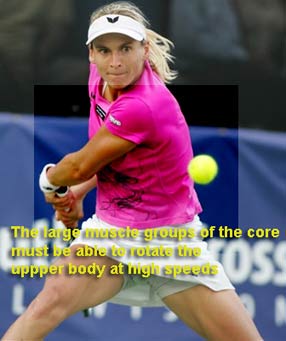
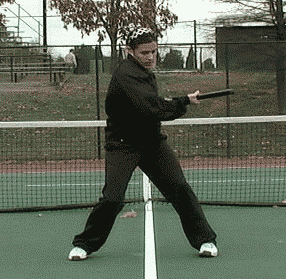
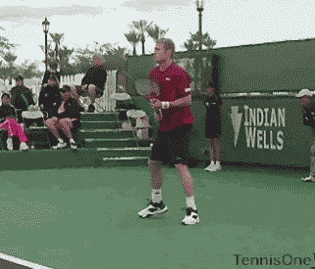
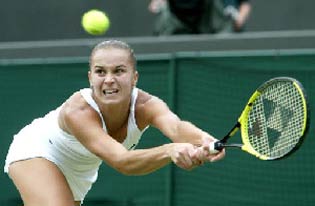
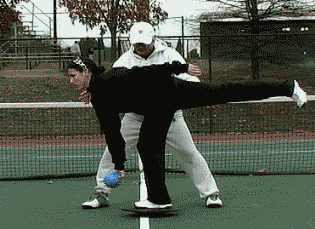
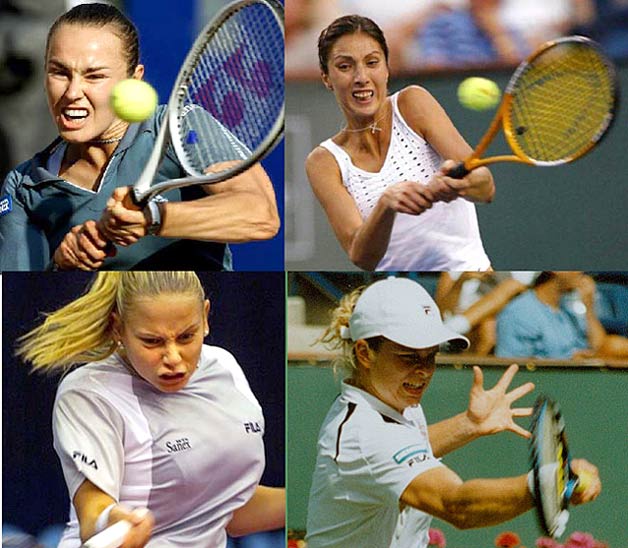
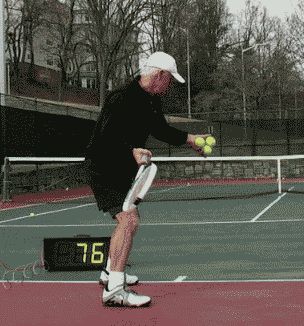
 Ray Brown, Ph.D.
Ray Brown, Ph.D.